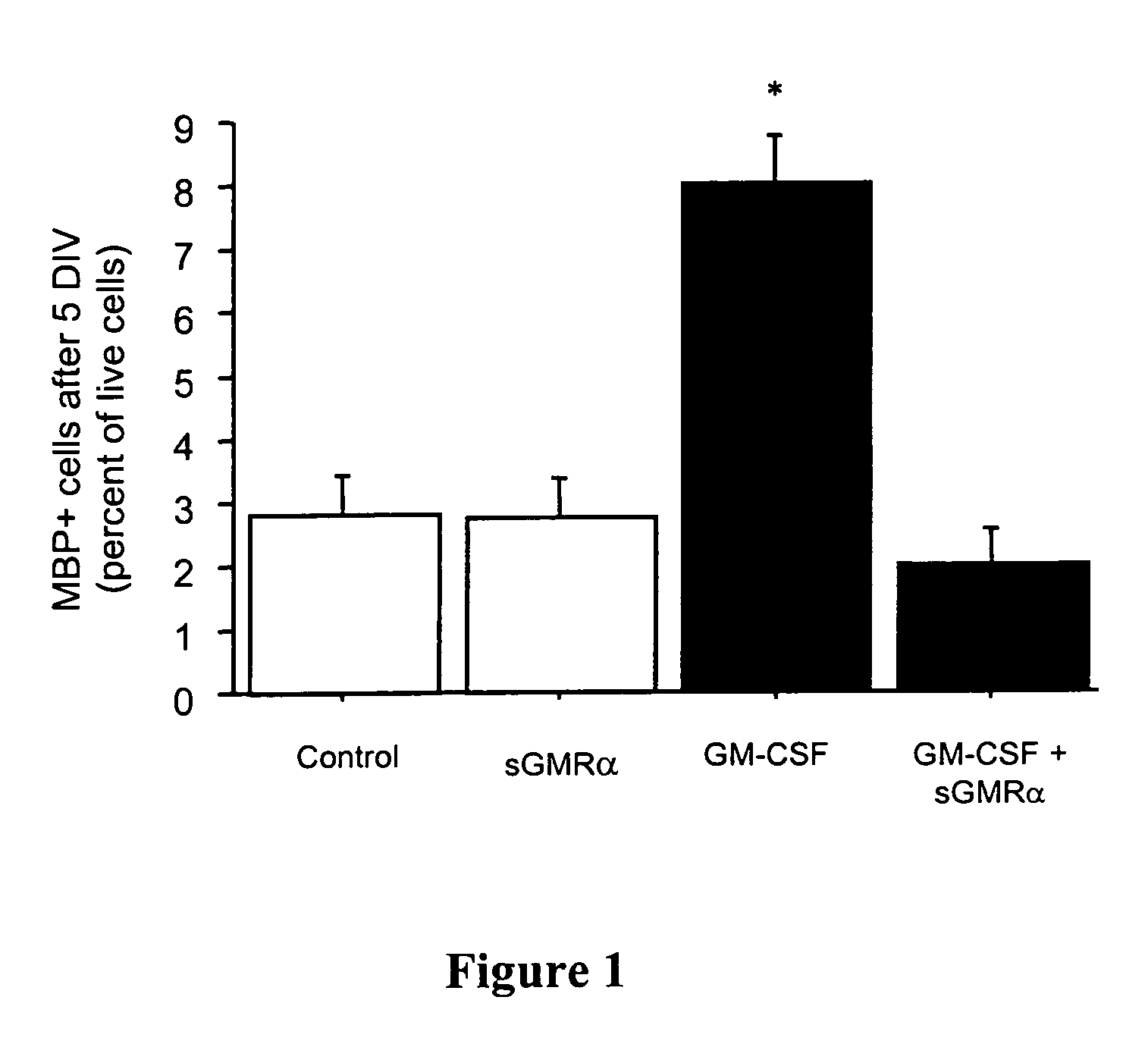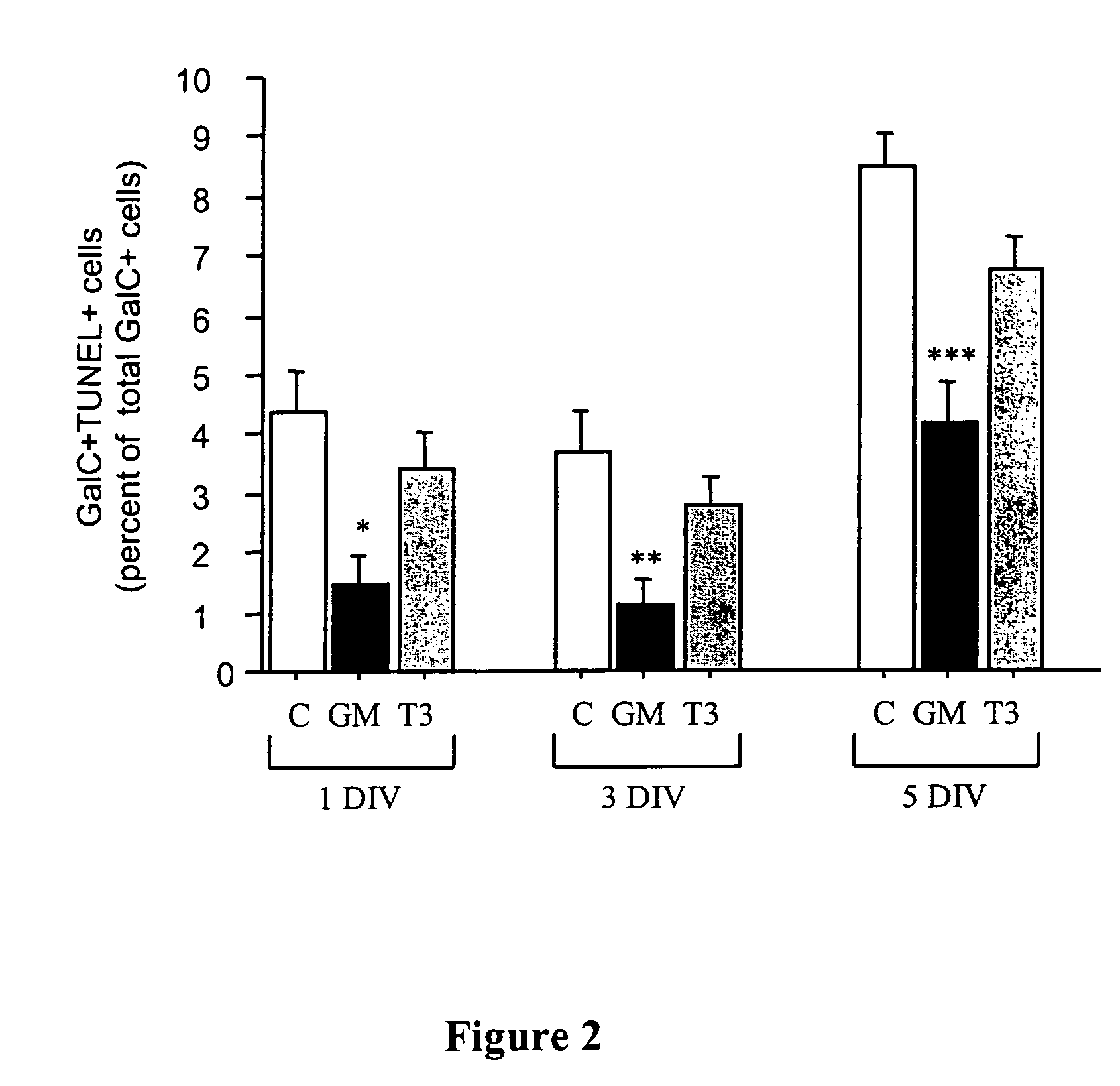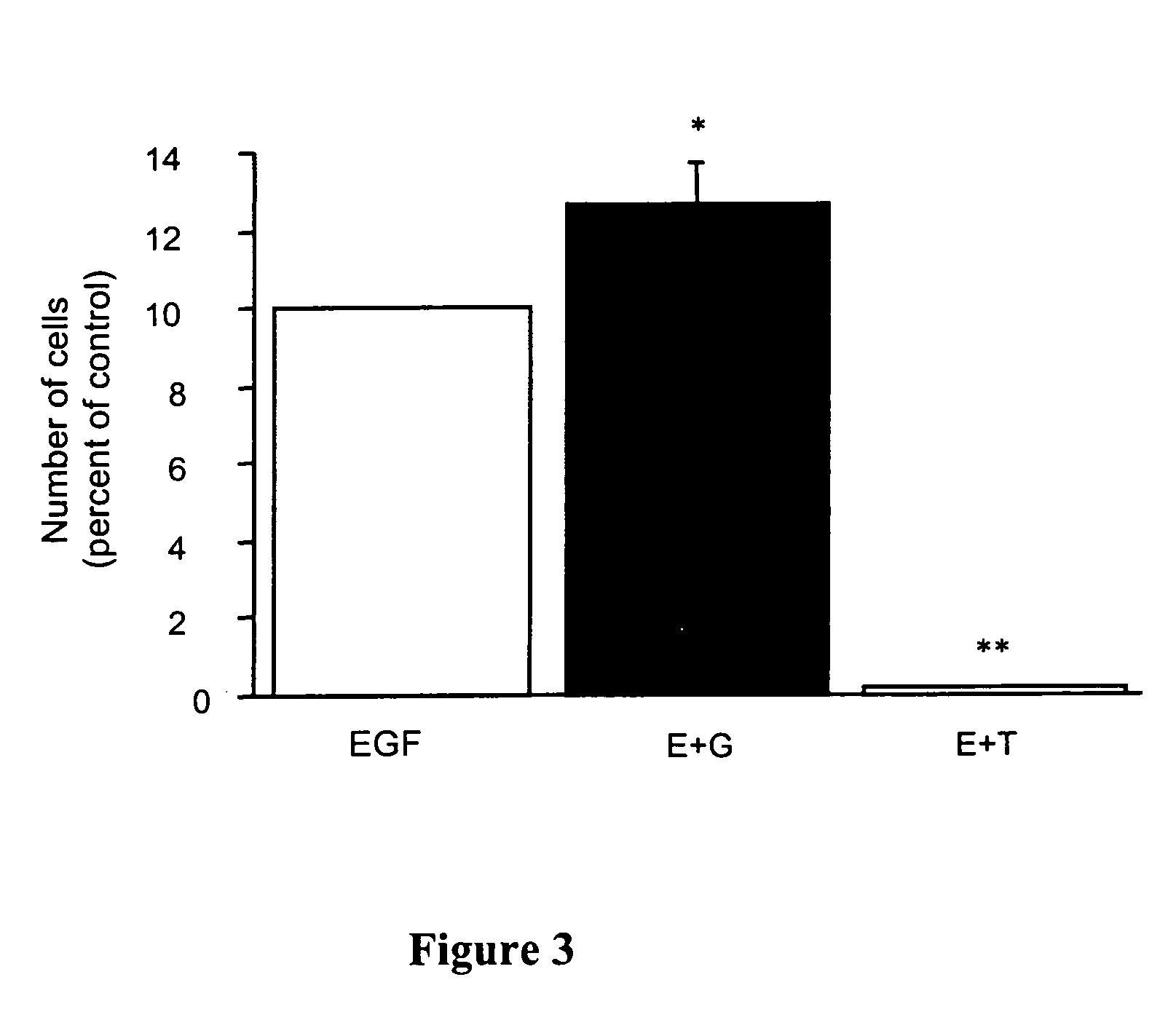Oligodendrocyte production from multipotent neural stem cells
a neural stem cell and multi-potent technology, applied in the field of neural stem cell multi-potent cell production, can solve the problems of devastating neurological consequences, affecting the survival of patients, and unable to obtain large numbers of myelinating cells for transplantation,
- Summary
- Abstract
- Description
- Claims
- Application Information
AI Technical Summary
Benefits of technology
Problems solved by technology
Method used
Image
Examples
example 1
GM-CSF Enhances Oligodendrocyte Production from Neural Stem Cells
[0089]To determine the effect of GM-CSF on neural stem cell differentiation, a culture of neural stein cells was prepared from mouse embryos and subjected to a rapid differentiation protocol. Embryonic Day 14 (E14) mouse ganglionic eminence was dissected and grown in media hormone mix (MHM) plus 20 ng / ml epidermal growth factor (EGF) for one week to generate primary neurospheres. The composition of MHM was as follows:[0090]DMEM / F12 (1:1)[0091]glucose (0.6%)[0092]glutamine (2 mM)[0093]sodium bicarbonate (3 M)[0094]HEPES (5 mM)[0095]insulin (25 μg / ml[0096]transferrin (100 μg / ml)[0097]progesterone (20 nM)[0098]putrescine (60 μM)[0099]selenium chloride (30 nM)
[0100]Primary neurospheres were then dissociated and plated on poly-L-ornithine coated coverslips in 24-well plates at a density of 200,000 cells / ml in 1 ml of MHM per well. Cells were allowed to differentiate in the absence or presence of 20 ng / ml GM-CSF (murine reco...
example 2
Effect of GM-CSF on Oligodendrocyte Survival
[0105]The survival effects of GM-CSF on oligodendrocytes were examined with two lines of experiments. In the first line of experiments, neural stem cells were cultured as described in Example 1 in the presence or absence of GM-CSF or T3, and were fixed after 1, 3 or 5 days of culture in differentiation media. The fixed cells were immunostained for the maturing oligodendrocyte marker GalC and TUNEL, which is a marker of dying cells. The numbers of dicing, maturing oligodendrocytes (GalC+, TUNEL+cells) were then counted and their percentage in total GalC+cells are shown in FIG. 2.
[0106]As shown in FIG. 2, GM-CSF significantly reduced the number of dying GalC+cells, while T3 had only minor survival effects, if any. This survival effect of GM-CSF was evident after the cells had been in differentiation culture for only one day, and became more prominent with time. Therefore, these results indicate that GM-CSF can act as a survival factor for ol...
example 3
Effect of GM-CSF During Stem Cell Proliferation
[0111]To assess the effect of GM-CSF on proliferation of neural stem cells, the number of cells generated in neurosphere cultures, prepared according to Example 1, was counted when grown for 1 week in various culture media. Thus, E14 ganglionic eminence cells were grown at a density of 200,000 cells / ml in 40 ml of media for 1 week. The media were MHM plus EGF, MHM plus EGF and GM-CSF, or MHM plus EGF and T3. Spheres were then collected, dissociated and cells were counted with a hemacytometer. The cell numbers were calculated as percentages of the control (MHM plus EGF).
[0112]As shown in FIG. 3, these results indicate that GM-CSF slightly increased the total cell number in the neural stem cell culture while T3 reduces the number.
[0113]The effect of GM-CSF on primary neurosphere numbers was also examined by growing cells from E14 mouse ganglionic eminence in MHM plus EGF, MHM plus EGF plus GM-CSF, or MHM plus EGF plus T3, all at concentra...
PUM
| Property | Measurement | Unit |
|---|---|---|
| concentrations | aaaaa | aaaaa |
| axonal conduction | aaaaa | aaaaa |
| action potential | aaaaa | aaaaa |
Abstract
Description
Claims
Application Information
 Login to View More
Login to View More - R&D
- Intellectual Property
- Life Sciences
- Materials
- Tech Scout
- Unparalleled Data Quality
- Higher Quality Content
- 60% Fewer Hallucinations
Browse by: Latest US Patents, China's latest patents, Technical Efficacy Thesaurus, Application Domain, Technology Topic, Popular Technical Reports.
© 2025 PatSnap. All rights reserved.Legal|Privacy policy|Modern Slavery Act Transparency Statement|Sitemap|About US| Contact US: help@patsnap.com



